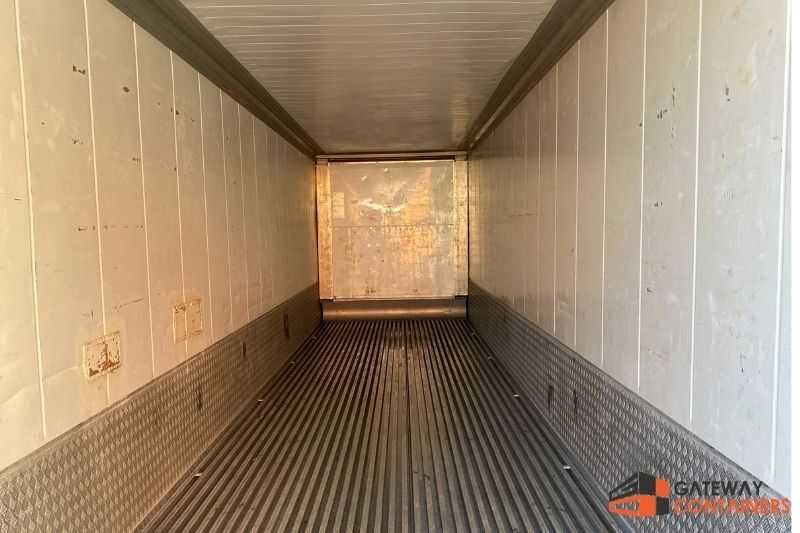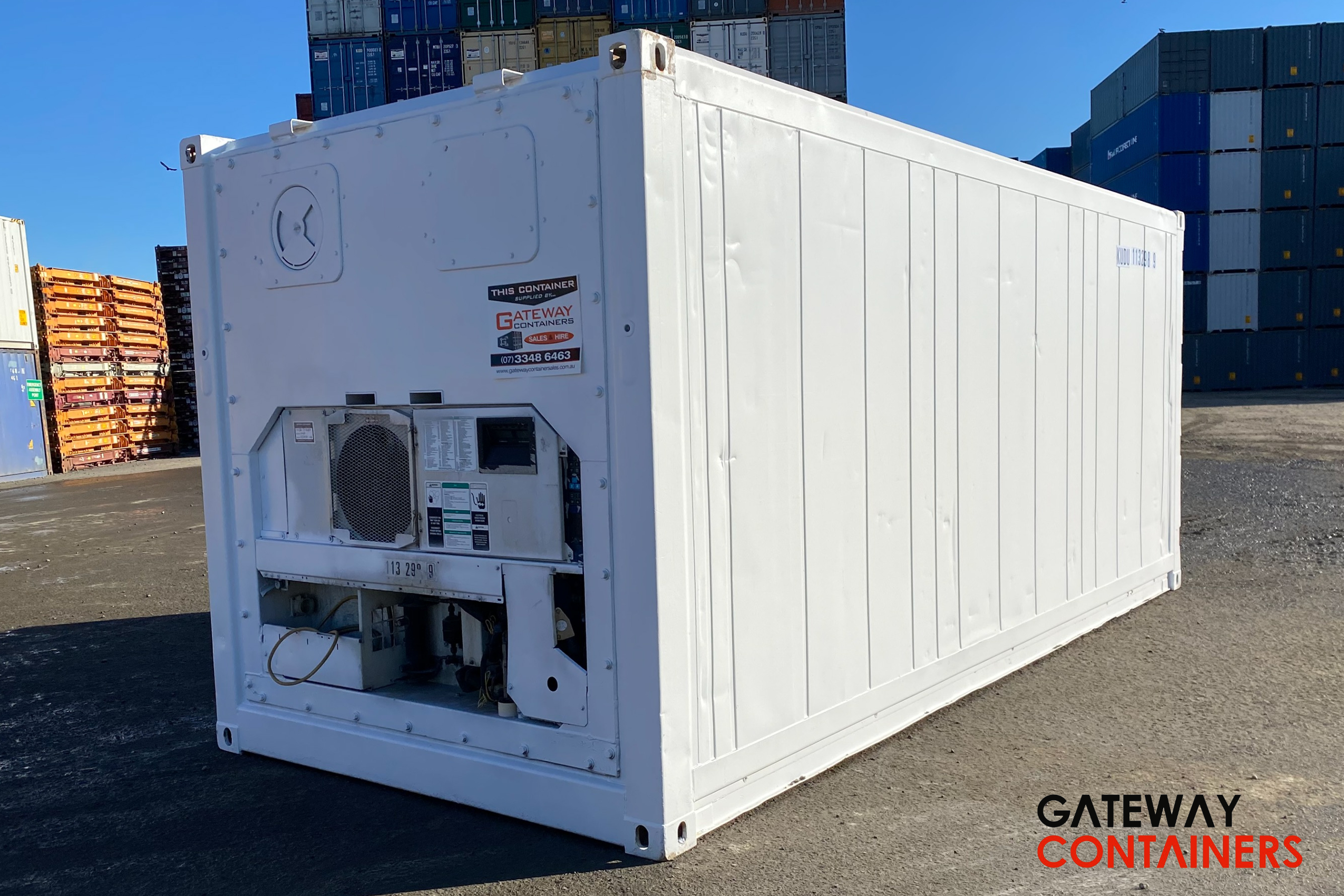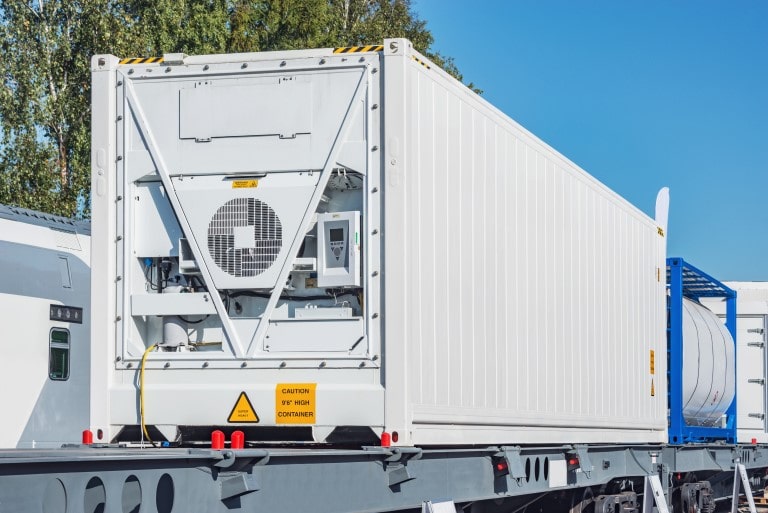The greatest revolution after shipping containers transformed global cargo movements in the 1960s was a product of modern technology – The Refrigerated (Reefer) Container. This meant it became possible to transport food, pharmaceuticals and almost anything requiring temperature control affordably around nearly anywhere!
Fresh food is a hot commodity these days, and the time it takes for your produce to spoil has become one of many inconveniences that restaurants face. But what if there was an easy way around this?
A refrigerated container (reefer) can provide instant cold storage at low cost! It’s portable which means you can set up shop anywhere with enough room on-site or off-site.
What is a reefer container?
A reefer shipping container is the same thing as a refrigerated shipping container or a refrigeration unit. The ambient temperature inside a shipping container can greatly fluctuate depending on climatic conditions, the container’s location on the carrier, the amount of insulation in the container, and the overall condition of the container.
A reefer or refrigerated container can ensure the cargo temperature is maintained at any temperature level that is desired by the supply chain operators. This means items like dairy products, chilled products, and chemical products like medicines etc. can be transported safely across long distances.

How do they work?
Reefer containers have a special heat-control unit that keeps the temperature inside the container within a set temperature range between -30°C and + 30°C. This is coupled with grooves in the sides, ceiling and floor to allow the air to flow within.
It is insulated to minimise the energy required to maintain the temperature inside even in adverse temperatures outside – making this perfect for a variety of shipments. In theory, you could keep goods at 25°C through a Central Asian winter on a train just as reliably as you can keep frozen lamb carcasses from thawing in a full blast Aussie heatwave!
The cooling unit is connected to the mains electricity supply when on the dock (or in your company’s yard) or a diesel generator/the ship’s power unit when being moved around the world. When in transit those looking after the reefer will keep a close eye on the temperature readings to ensure the goods inside are not spoiled.
What size are they?
At Gateway containers we have a variety of refrigerated unit options available to our customers. Whether you want to hire or purchase your container, we have both 20ft and 40 ft container refrigeration units available. Our container specialists will be able to show you through a selection of cold storage space options.

When it comes to carrying capacity, this varies depending on the size of the container:
- 20ft refrigerated containers have a load capacity of 28.2m2, an interior height of 2.26m – 2.28m, and a max load weight of 27,380-27,620kg.
- 40ft refrigerated containers have a load capacity of 67.5m2, an interior height of 2.5m, and a max load weight of 29,200kg.
Why would you want refrigeration or freezer containers?
Reefers are the reason you can enjoy French cheese in perfect condition at a local deli. Yes, even some Australian wines are transported in refrigerated containers to international markets that love our exports!
There are more uses than simply using reefers to get goods shipped from A to B. They can be used perfectly well as static units on site for storage of food or other perishable goods. Here are a number of examples where they can be used:
- Farms
- Restaurants
- Cafes
- Catering
- Hospitals for medical supplies or things like vaccines and medicines – even as a morgue
- Warehouses
For people and organisations that want to have their goods kept at correct temperatures, a reefer shipping container could well be a cheaper and more effective solution than having a large freezer or fridge built on site. This is because they are in ready-to-go condition and can be dropped on-site with minimal preparation – you just install pile foundations if you don’t have a concrete pad to drop it on.

If you need to transport large amounts of food or heat-sensitive goods to a destination and ensure that it arrives in good condition, then reefer containers are your best option. The refrigeration systems that are used in the containers these days are extremely accurate and reliable, and can be managed to within a degree or so throughout the journey. When they are shipped the containers are also monitored closely by the shipping staff.
Benefits of owning a reefer container
Refrigeration units can help a variety of business owners in many ways:
- Precise temperature control can help florists ensure their produce stays fresh.
- Cool temperature prevents dairy products from turning. Cool storage ensures food items can make it to their desired destination in good condition.
- Temperature-sensitive goods like fine wine can benefit greatly from shipment services like insulation and control of internal temperature.
However, you need to take into account that a reefer container has the cost of running. Once you have accepted delivery, you will need to have a constant power source running to your container to ensure it functions correctly.
Our refrigerated containers typically come in three-phase power, however, we also offer single-phase reefers under custom order. Whether you connect them to portable generators or a permanent power supply, the downside of a reefer container is that you need to constantly power it.
Cost of having one installed in your home or business
When calculating the costs of installing a reefer container into your business you need to consider the cost of running. To run the container you will need to have access to a generator (or genset) or a permanent power supply. To get an idea of the best price solution, get a quote from our container specialists today.
Here at Gateway Container Sales, we offer the opportunity to purchase, hire or lease a standard reefer container for long or shorter-term use.
This could be tax advantageous for your business but could also represent a significant cost saving over buying one from us for what might only be a short to medium-term use. For example, you may need added cool room capacity for an online food store during the Christmas peak shopping period that would not be used through the rest of the year.
Contact us now to discuss what refrigeration options are best for you.
